
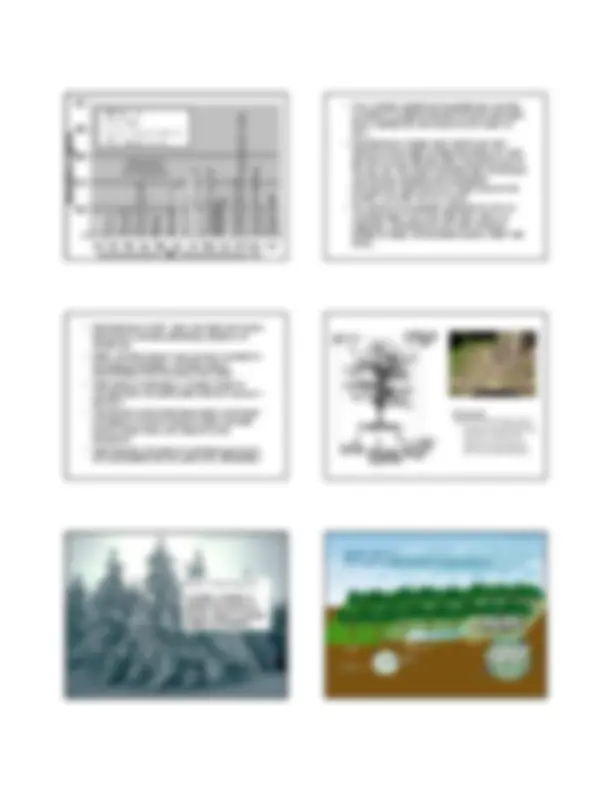
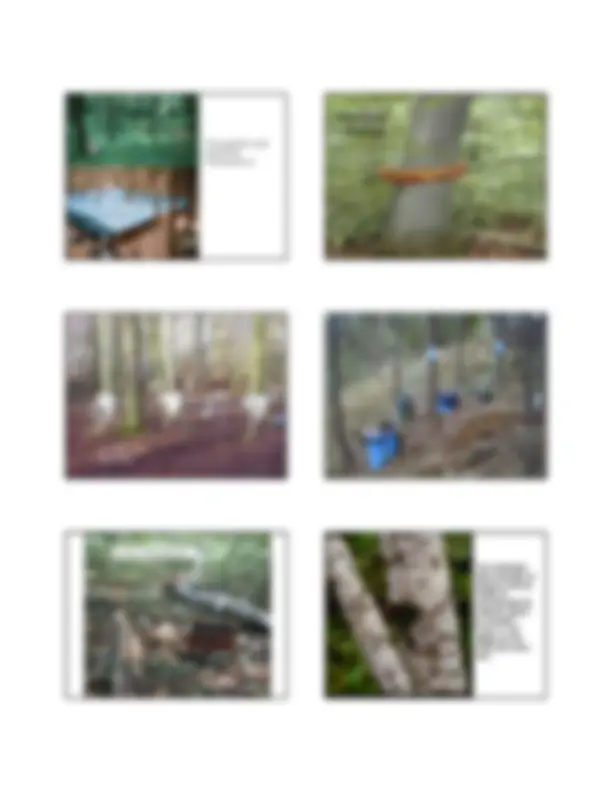
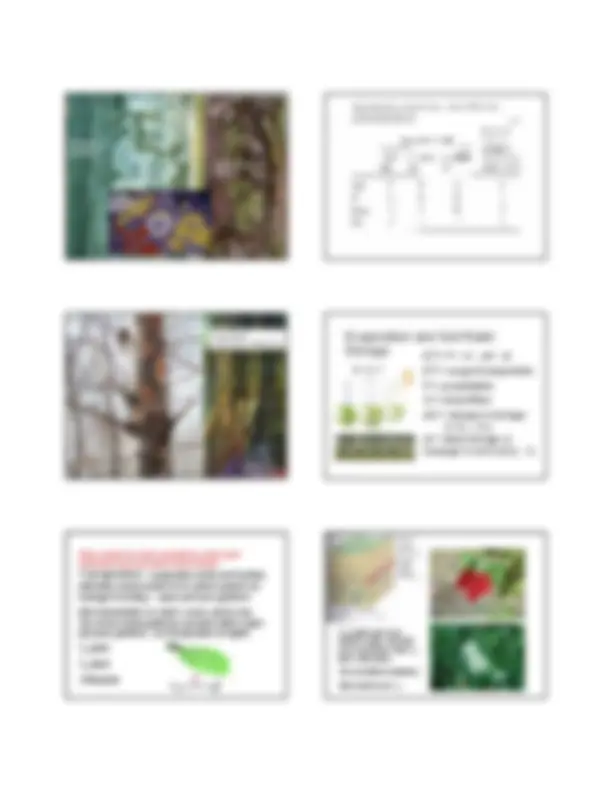
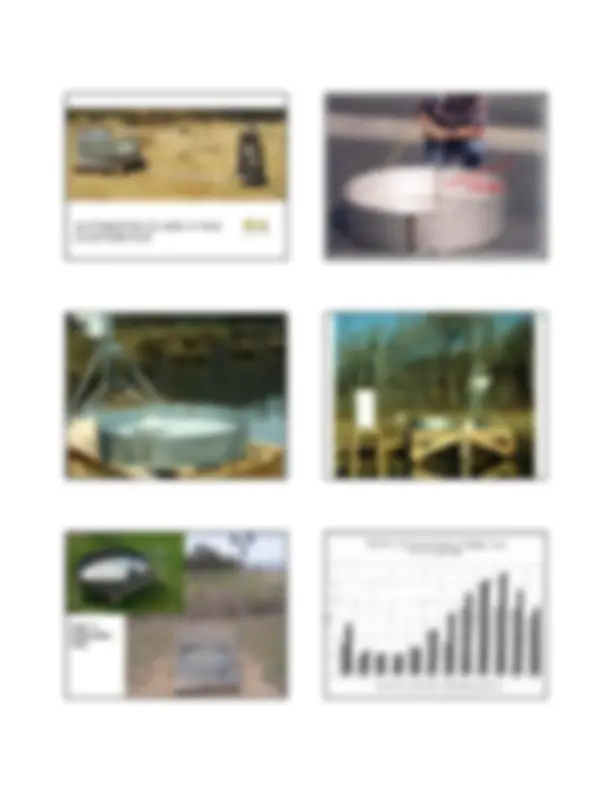
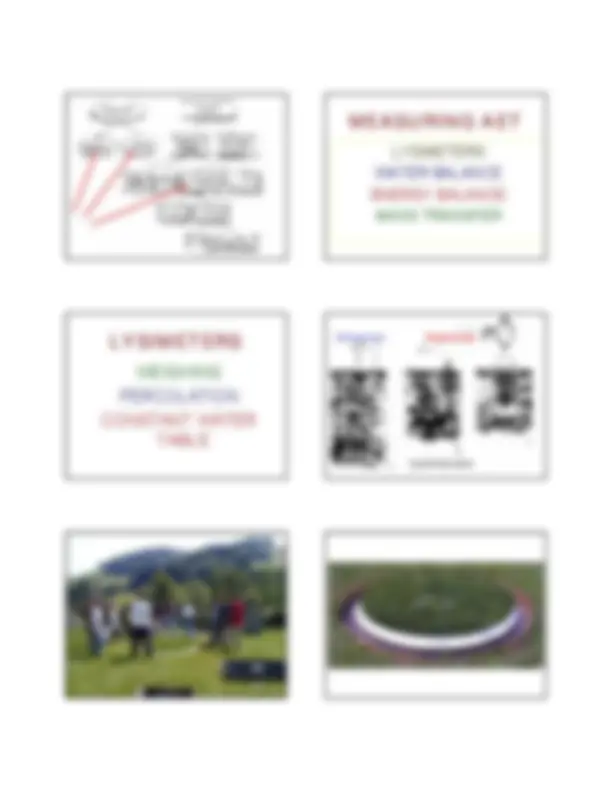



Study with the several resources on Docsity

Earn points by helping other students or get them with a premium plan


Prepare for your exams
Study with the several resources on Docsity

Earn points to download
Earn points by helping other students or get them with a premium plan
Community
Ask the community for help and clear up your study doubts
Discover the best universities in your country according to Docsity users
Free resources
Download our free guides on studying techniques, anxiety management strategies, and thesis advice from Docsity tutors
Evapotranspiration Material Type: Notes; Professor: White; Class: Watershed Ecology; Subject: BIO Biology; University: Murray State University;
Typology: Study notes
1 / 11

This page cannot be seen from the preview
Don't miss anything!







INTERCEPTION = CANOPY INTERCEPTION + LITTER INTERCEPTION ( SOME INTERCEPTION OCCURS ON PAVEMENT AND OTHER HARD SURFACES BUT IS INSIGNIFICANT IN MOST ECOSYSTEMS ). INTERCEPTION BECOMES EVAPORATION
PRECIPITATION
Gross Rainfall
Throughfall Stem- flow Throughfall
Throughfall
Interception Evaporation
Infiltration
Interception Evaporation
Interception Evaporation
Litter
Three ways of thinking about the results of interception
Soil moisture
Water plus nutrients and other ions and hormones
Root zone
Less interception and stemflow in winter
Throughfall and stemflow interceptors
Litter interception
The distribution and production of lichens is directly related to stemflow and the nutrients carried in stemflow – “moss” is not always on the north side of the tree!
Foliose lichens
Fruiticose lichens
Crustose lichens
Interception by selected crops – from USDA Soil Conservation Service
Tree hole stemflow habitats
Evaporation and Soil Water
Storage (^) ET = P – Q - S - l
ET = E + T
Note: except for minor exceptions, water (and nutrients) cannot be taken up by leaves.
•C 3 plants are more efficient under cool and moist conditions than C (^4) and CAM plants. •No specialized anatomy
•Most plants are C 3.
FIELD CAPACITY can be has been defined in several ways: the maximum water holding capacity of the soil, above which all excess water drains or overflows; an upper limit of water available for transpiration; a water potential of -33 kPa (-1/3 bar); a water potential generally between -10 and -33 kPa (kilopascals (1 kPa ≡ 1000 Pa) depending on soil texture and other properties; when drainage becomes negligible after thorough wetting; 2 or 3 days after a thorough wetting at specified depth at a specified time with drainage from saturation; a specific value of drainage rate, such as 2 mm/d; or a specific value of hydraulic conductivity;
ET Gage A ceramic evaporator at the top of the instrument responds to sun and weather as plants do. Water is drawn from a reservoir. The water level falls in the sight tube one inch for each inch used by plants. Replaceable green canvas covers modify the evaporation rate to simulate ET from field crops or grass. Rain cannot get into the instrument. The rain gauge provided with the meter measures rain separately.
Level logger
Class A Evaporation Pans
Schematic drawing of a weighing lysimeter
Estivant Pines
Cedar “swamp” typical of those now located near the Estivant Pines
Mean annual evaporation estimated from pans (inches)
PPT is ~ 60 in giving us a surplus of ~ 10 in